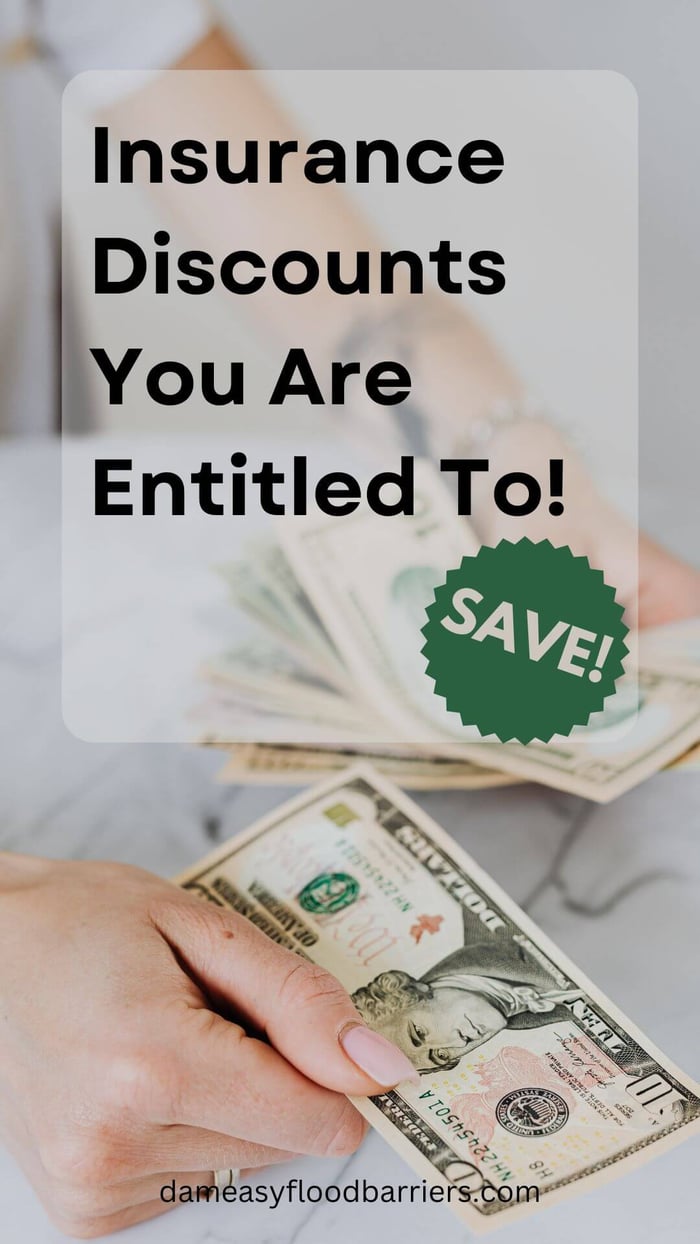Table of Contents
With major storms like Hurricane Helene, now is the perfect time to make sure you’re prepared. Flooding can cause significant damage to homes and businesses, but flood insurance can offer peace of mind when it comes to protecting your property. But did you know there are ways to save on insurance through discounts offered by both the National Flood Insurance Program (NFIP) and private insurers?
In this post, we’ll break down the different ways you can qualify for flood insurance discounts, from NFIP’s community rating system (CRS) to bundling policies with private insurers. We’ll also give you tips on how you can lower your premium and explain why flood barriers, like Dam Easy Flood Barriers, are a smart investment for your flood protection plan.
Understanding Flood Insurance
Before we dive into discounts, let’s quickly go over why insurance is crucial. Many people assume their homeowners’ or renters’ insurance will cover flood damage, but this isn’t usually the case. Flood insurance is typically sold separately, especially for those in flood-prone areas.
Flood insurance can be purchased through the NFIP or private insurers. While NFIP policies are widely available, some people prefer private insurance for its flexibility and additional coverage options.
Regardless of which route you take, having flood insurance helps cover the costs of repairing or replacing your home and belongings after a flood. Considering the potential for catastrophic storms like Helene, insurance is a must-have for anyone living in a coastal or high-risk area.
What Are the Costs?
The average annual cost of flood insurance through the NFIP is around $700 to $1,000, but this can vary depending on your location, your home’s risk level, and other factors like the age of the building. The good news is that there are ways to reduce these premiums and save money on your insurance.
NFIP’s Community Rating System (CRS)
One of the most significant ways to save on insurance is through the National Flood Insurance Program’s Community Rating System (CRS). This system offers discounts based on the efforts your community has taken to reduce flood risk.
Here’s how it works:
- CRS Levels: Communities are ranked on a scale of 1 to 10, with 1 being the highest rating. The higher your community’s rating, the bigger the discount you can receive on your insurance.
- Discounts: Depending on your community’s CRS level, you could save anywhere from 5% to 45% on your NFIP flood insurance premiums. For example, if your community has a CRS rating of 5, you might be eligible for a 25% discount on your premiums.
To find out if your community participates in the CRS program and what their rating is, you can check FEMA’s website or contact your local government. Encouraging your local officials to participate in the CRS program is a great way to help the entire community save on insurance while improving flood preparedness.
Elevating Your Home or Property
Another way to qualify for discounts on your flood insurance is by taking steps to reduce your property’s flood risk. One of the most effective ways to do this is by elevating your home. The higher you elevate your property, the lower the risk of flood damage, which can lead to lower insurance premiums.
- FEMA guidelines suggest elevating your home at least three feet above the base flood elevation (BFE). In some cases, doing this can reduce your premiums by up to 50%.
- Floodproofing improvements like installing flood barriers, elevating HVAC equipment, and using water-resistant building materials can also qualify you for lower premiums.
Dam Easy Flood Barriers, for example, offer a simple yet highly effective solution for floodproofing your home. These barriers are easy to install and can prevent floodwaters from entering your property, significantly reducing the risk of flood damage.
Private Insurance Discounts: Multi-Policy Bundles
While NFIP policies are a good option for many homeowners, private insurance companies are increasingly offering flood insurance as part of their product lineup. Many private insurers will provide discounts if you bundle your insurance with other types of insurance, like homeowners, auto, or life insurance.
- Bundling policies: By bundling multiple policies with the same insurer, you can often save money on your overall premiums. Some insurers may offer a discount of up to 20% when you bundle your home and flood insurance.
- Loyalty programs: Some private insurers offer additional discounts for long-time customers or for people who have multiple policies with them. It’s worth asking your insurance agent about these savings opportunities.
Mitigation Discounts
Both NFIP and private insurers may offer discounts if you’ve taken steps to reduce the risk of flood damage to your home. These “mitigation discounts” reward homeowners for investing in flood protection measures such as:
- Installing flood barriers: Products like Dam Easy Flood Barriers can help keep water out of your home during a flood event, potentially qualifying you for a discount on your flood insurance.
- Improving drainage systems: Upgrading your home’s drainage system to handle heavy rainfall can help reduce the risk of flooding and might make you eligible for lower premiums.
- Relocating utilities: Moving appliances and utility systems like furnaces and water heaters to higher ground can reduce your flood risk and qualify you for a premium reduction.
Φράγμα πόρτας φραγμού πλημμύρας

$949.00
DAM EASY® FLOOD BARRIER ΠΟΡΤΑ ΦΡΑΓΜΑ Οι πλημμύρες γίνονται πιο συχνές σε όλο τον κόσμο. Αυτό που κάποτε ήταν ένα φαινόμενο 100 ετών είναι τώρα μια εποχική τάση που πρέπει να αντιμετωπίσουν οι ιδιοκτήτες σπιτιού. Γι 'αυτό ακριβώς… Read More
Elevation Certificates
If you live in a high-risk flood zone, getting an elevation certificate can help lower your insurance premiums. An elevation certificate is an official document that details your home’s elevation compared to the BFE in your area.
The higher your home is above the BFE, the lower your flood risk—and the lower your insurance premiums could be. Having an elevation certificate can also help you better understand your flood risk and identify other steps you can take to reduce that risk.
Preparing for Hurricane Helene: Take Action Now
With Hurricane Helene forecasted to intensify and threaten the Gulf Coast, there’s no better time to ensure you’re protected from flood damage. Here are a few things you can do right now:
- Check your insurance policy: Make sure your flood insurance is up-to-date and that you understand your coverage limits.
- Install flood barriers: Products like Dam Easy Flood Barriers can be installed quickly and offer excellent protection against floodwaters. These barriers can also help lower your insurance premiums by reducing your home’s risk of flooding.
- Stay informed: Keep an eye on weather reports, especially if you live in a high-risk area. Make sure you know your evacuation routes and have an emergency plan in place.
Conclusion. So, How to Save on Insurance?
Flood insurance doesn’t have to break the bank—especially if you take advantage of the discounts offered by the NFIP and private insurers. Whether you’re benefiting from your community’s CRS rating, bundling policies, or taking steps to reduce your home’s flood risk, there are plenty of ways to save money.
Don’t wait until the next big storm hits. With Hurricane Helene on the horizon, now is the time to invest in flood protection and make sure your home and family are prepared.
Flood barriers, like those from Dam Easy, are a cost-effective way to safeguard your property and potentially qualify for lower flood insurance premiums. Stay safe, be proactive, and protect your home from flooding today!




